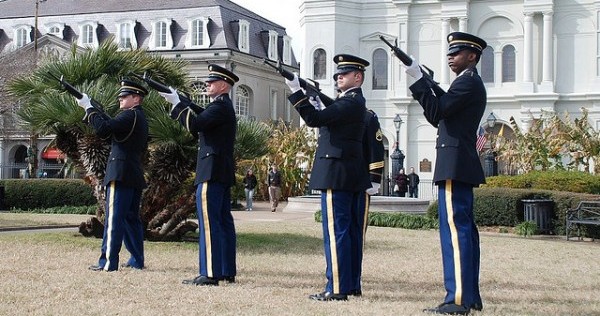
In 2018, New Orleans will celebrate the 300th anniversary of its settlement by the French—a noteworthy event, although you wouldn’t know it from eavesdropping on New Orleanians. Although it’s early, I haven’t heard anyone mention it since last winter, when the city lost its bid to host the 2018 Super Bowl. We lost out to Minneapolis because, well, February, Minnesota, and obviously. Landing another Super Bowl was a missed opportunity for New Orleans because shutting down streets and providing millions of dollars in tax-subsidized benefits to an exclusive group of NFL billionaires would somehow be a fitting way to mark the founding of a dubious colony populated under false pretenses.
Anyway, I have a theory behind the lack of enthusiasm to date for the tricentennial: the city is exhausted following a slew of other milestone anniversaries. New Orleans, in short, is suffering from anniversary fatigue.
This unfortunate series of noteworthy events began in 2003. That was when the city celebrated the bicentennial of the Louisiana Purchase, when Thomas Jefferson pulled one over on the wily emperor Napoleon. (Incidentally, the emperor is still celebrated here with an eponymous bar famous for a British cocktail served with cucumber.) The historic date was marked by, among other events, a reenactment of the signing of a piece of paper in the original city hall.
In 2012, Louisiana celebrated two centuries of statehood with various festivities and a traveling exhibit of Louisiana artifacts. A Louisiana Bicentennial Statehood stamp was released, as was a bicentennial license plate and a bicentennial CD featuring what was described as “some very unique cuts of songs.”
Did you know that January 11, 1812 marked the first time a steamship made its way to New Orleans, and then turned around and headed back upriver? You would have if you had lived here three years ago. The River Heritage Foundation and the Propeller Club of New Orleans jointly hosted a full-day symposium, a reenactment of the first voyage, a boat parade on the river, and a horse and carriage parade in the French Quarter.
This past January was the anniversary of the Battle of New Orleans, which marked the conclusion of a three-year commemoration of the War of 1812, the observance of which had also been launched in New Orleans. This was to celebrate the defeat of the British military, which had been suffering from seller’s remorse since the American Revolution. A battle reenactment drew 1,000 reenactors and 10,000 spectators. A commemorative stamp was issued.
This was followed in April by the fifth anniversary of the BP oil spill, which killed 11 rig workers, pumped million of gallons of oil into the Gulf, and devastated local economies. There was no reenactment or stamp, but wall-to-wall coverage in newspapers, television, and Twitter feeds, much of which debated lasting damage and lessons learned.
This summer the city is gearing up for the 10th anniversary of Hurricane Katrina, in late August. This will be a rightfully significant event, and has already been marked with conferences and colloquia debating the enduring impact of what’s arguably the defining event of the city’s past century. So far, I’ve received for review five new books about the disaster and its response.
September 9 of this year will mark the 50th anniversary of Hurricane Betsy, America’s first $1 billion hurricane. It rampaged across Florida before striking New Orleans, killing 76 people, breaching both sides of the beleaguered Industrial Canal, and causing extensive flooding. I haven’t heard much talk about Betsy, but then, marking two major hurricanes in two weeks is probably more than the mind can handle.
From this summer until the tricentennial, New Orleans faces an unprecedented anniversary drought. (The city’s fabled red light district, called Storyville, was shut down in 1917, but as far as I know there is no centennial commemoration planned.) This is good news for those hoping to kindle some ardor for a rousing and festive 300th birthday bash.
I have confidence that New Orleans will rally once the citizenry catches its collective breath and realizes that a superb opportunity exists for a year-long party. New Orleans does love to mark momentous occasions with a glass in hand, and this particular party will apparently include Harry Connick Jr., James Carville, Drew Brees, and Wynton Marsalis, all of whom are on the planning committee.
So far, the chief highlight of the tricentennial appears to be the 2018 opening of a new airline terminal designed by celebrity architect Cesar Pelli. A new portal for the city makes for a nicely poetic tribute to those French settlers landing at a muddy bend in a river. But if three centuries of local history is any guide, airport construction will be afflicted by delays, cost overruns, nepotism, fictional status reports, and much, much more.
So, all and all, a fitting way to celebrate 300 years of survival of America’s most improbable city.

